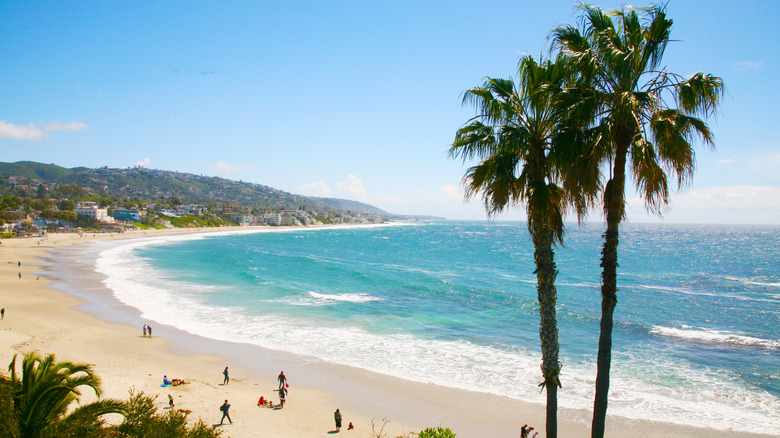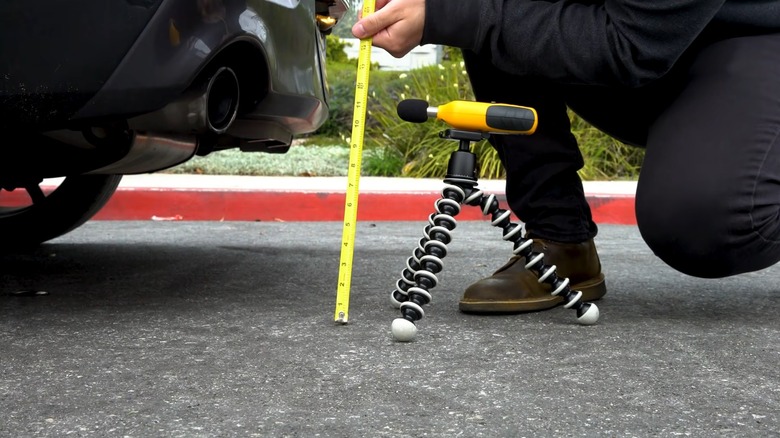4 Popular Car Mods That Are Illegal In California
We may receive a commission on purchases made from links.
California, one of the few places in the world you can ski and surf in the same day. With several of its cities among the sunniest in the U.S., the Golden State offers many benefits, unless you're into aftermarket car modification. It's no secret this state has been a big proponent of electric vehicles, with programs like California's new EV charge card encouraging drivers to switch to battery-powered options. So those looking to add more muscle under the hood of traditional gas-powered engines, or even implement non-performance design changes, should tread carefully.
Not all mods are forbidden, but unfortunately for automotive enthusiasts, some of the most crowd-pleasing visual and performance add-ons are illegal in California. Of course, if you decide to go completely overboard, like one of the most ridiculous modifications from "Pimp My Ride," you can expect pushback from a number of other states as well.
California's rationale for outlawing vehicle enhancements varies depending on the modification, but typically falls into one of four categories: the add-on impedes visibility, it's a potential distraction for other drivers, it exceeds noise limits, or it doesn't meet the state's stringent emissions regulations.
While you may agree with some of these restrictions, their irony isn't lost on those familiar with the history of hot-rodding culture, which largely developed in 1930s Southern California. Nevertheless, if you have any of the following mods installed on your car, think twice before taking to the streets of California.
Windshield and front side-window tint restrictions
While heavily tinted vehicle windows offer a sleek, upgraded look, you have to be careful about where you apply them and how much light they block out in California. The concerns about tinted car windows involve reduced visibility both for the driver and law enforcement, who can't see into the vehicle to identify possible threats. The strictest regulations are around the windshield, where you can't install any light-impeding tint beyond the upper 4 inches of the glass.
While it might not interfere with your ability to see the road during daylight, travel during the evening is another matter. Window tint measures visual light transmission percentage to denote distinct levels of darkness. For example, if a tint has a 50% VLT, its blocking around half of the light entering the car through the window.
California permits as low as 70% VLT on the front side windows, and as dark a tint as you want for the rear side and back window. However, many drivers with experience using more aggressive tints admit that around 20% VLT, it can become challenging to see at night, with vision noticeably limited, especially in areas devoid of street lights.
Underglow light kits can't be red
One way to make your ride stand out (especially at night) is adding additional exterior lighting. Underglow — lights placed under the car — was featured heavily in the 2001 movie "The Fast and the Furious," and while it faded in the later 2000s, it made a resurgence in the modification community in 2020.
While California does allow underglow, it must follow a strict series of rules that determine placement, size and even color. While you can equip underglow, you can't use the color red, as it's restricted to authorized first-responder vehicles.
While this may prohibit some creative license when adding effects to your ride, it makes sense, especially if red is displayed on the front of your vehicle, which could confuse or distract other motorists as you approach. In addition, since taillights are red, indicating a car is slowing down or stopping, the red light emanating from underglow could disorient other drivers, leading to an accident.
Aftermarket mufflers that exceed 95 decibels
Lawmakers in California are serious about noise violations. For example, after installing a new glasspack (a performance muffler packed with fiberglass), you can receive fines if police suspect your car is outputting greater than 95 decibels. These fines start at a $50 ticket, moving up to hundreds of dollars for additional violations. They could even reach over $1,100 in some scenarios.
The good news is, California Vehicle Code 27151 does include some additional qualifications such as that the vehicle in question must weigh fewer than 6,000 pounds (which would exclude larger trucks like the Ford F-350). Motorcycles – which can average up to 95 decibels traveling under 40 mph, and reach ratings of 116 decibels at highway speeds – are also exempt.
If you're worried your modified muffler might be too loud, you can test it yourself with products like the Decibel Meter Tadeto Digital Sound Level Meter. If you do get a ticket for noise violation, you must get a Referee inspection (typically performed in the same facility as the Smog Checks), where a noise analysis will be administered. You'll be charged $108 for the test.
Aftermarket tuner chips will result in a smog-check failure unless air resources board approved
In a big blow to the tuner car community, in 2021 California implemented a new check in the annual smog inspections that includes tests for aftermarket electronic control unit programs and devices that don't meet California Air Resources Board standards. These performance chips are one of the best ways to get more horsepower out of your car and among the most affordable ways to boost your car's performance by letting you customize several factory settings that control things like shifting, fuel injection, and ignition timing.
In fact, these add-ons aren't just used for sports cars, but have also become popular among truck owners. For example, take Power Hungry Performance's Hydra Chip, which offers up to 17 presets for the 7.3L Ford Powerstroke turbodiesel, enhancing output an additional 140 horsepower on its extreme setting. The Hydra isn't for sale in California or to be used there due to Air Resources Board regulations.




